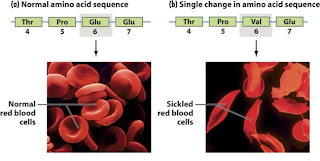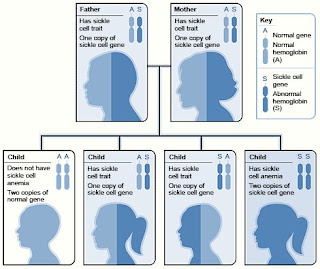Principles of Biology
19/10/2010
Student ID no :
MARK : 58
MITOSIS
IN ROOT TIPS
Aim
Introduction
Mitosis is a cellular process that replicates chromosomes and produces two identical nuclei in preparation for cell division. Mitosis has five phases: interphase, prophase, metaphase, anaphase and telophase. University of Illinois has an example of plant cells undergoing mitosis shown in Fig1.
Two identical daughter cells are produced after the mitosis process has been completed, they are identical with the parent cell.
Fig1. Plant cells in different phases of Mitosis:Interphase Prophase Metaphase Anaphase Telophase
Photo taken from : http://www.life.illinois.edu/ib/102/lectures/08reproduction.html
Interphase. The DNA duplicates during interphase to prepare for mitosis. Chromosomes are not clearly discerned in the nucleus.
Prophase. Chromatin in the nucleus begins to condense and becomes visible in the light microscope as chromosomes. The nuclear membrane dissolves. Microtubules attach at the kinetochores and the chromosomes begin moving.
Metaphase. Spindle fibers align the chromosomes along the middle of the cell nucleus. This line is referred to as the metaphase plate. This organization helps to ensure that in the next phase, when the chromosomes are separated, each new nucleus will receive one copy of each chromosome.
Anaphase. The paired chromosomes separate at the kinetochores and move to opposite sides of the cell. Motion results from a combination of kinetochore movement along the spindle microtubules and through the physical interaction of polar microtubules.
Telophase. New membranes form around the daughter nuclei while the chromosomes disperse.
Plant material:
The experiment was conducted using garlic cloves root tips.
Growth in an organism is controlled by regulating the cell cycle. In plants, the root tips continue to grow as they search for water and nutrients. These regions of growth (meristematic tissues) are good for studying the mitosis because at any given time, undergoing mitosis division can be observed in the root tips cells.Chemical substances used in the experiment.
1M HCl. Clear imagines of the cell won`t be possible to obtain if cells are still held together by the middle lamella of calcium pectate. Under the microscope the imagine would show cells on top of each other like a thick layer making impossible to identify the structure of each individual cell. Hydrochloric acid is used in experiment to react with the calcium pectate contained in the middle lamella and break the bond between cells .By adding HCL to the material is also "killing" the components of the cell so it makes it easier to fixate the material on the microscope slide.
Toluidine stain in dropping bottle.
The use of toluidine is to stain nuclei of the cells. Toluidine blue is a cationic dye which binds to tissue and give a colour of purple-greenish blue when in contact with nucleic acids from nuclei.This solution does not stain the cytoplasm so the nuclei are very distinctive in the imagine.
Light Microscope.
Light microscope use visible light to illuminate the specimen and can magnify up to 1000 times the size of the material.
Apparatus and Procedure
Apparatus :
Watch glass
Hollow glass block
Pipette
1M HCL
Sheets of soft absorbent paper
Pair fine forceps
Microscope slides and coverslips
Toluidine stain in dropping bottles
Clove of garlic which have been stimulated to grow.
Microscope: Motic B3 Professional series as shown in the picture below (Fig. 2)
Motic B series
Serial no 30208745
Equipment no MCOLL 06933
Fig2 : Motic B3 Light microscope
Picture taken from : http://spectraservices.com/Merchant2/merchant.mvc?Screen=PROD&Product_Code=B3S
Hazards:
Broken glass may cause injuries to skin.
Hydrochloric Acid may cause irreversible eye injury. Vapor or mist may cause
irritation and severe burns. Contact with liquid is corrosive and causes severe burns and ulceration to the skin.
Toluidine solution is an irritant and the solution stains .
Lab coat must be worn.
Safety goggles must be used.
Procedure:
- All apparatus needed were brought to the lab bench.
- Using a pipette, few drops of 1M HCL acid were placed in the glass block ,disposing of pipette after procedure in a safe place.
- Using the forceps, 6 root tips of about 2 mm long were detached from the plant material and placed in the acid. Time for reaction 3 minutes.
- Few drops of distilled water were placed in a watch glass.
- Using the tip of the forceps by picking up the material, the root tips were transferred to the watch glass containing distilled water.
- The hollow block containing acid was placed in a safe place after the transfer.
- Two of the root tips were transferred from the water on the microscope slide and using the absorbent paper the excess of liquid was dried up.
- One drop of the toluidine blue stain was added to the plant material.
- The cover slip was placed on the top of the material and gently taped on with the forceps. The tissue was well spread and blue.
- By gently lifting the cover slip up with the forceps and taping it down again, several times, the stain was covering up all the cells.
- The excess of the stain solution was dried up by using the absorbent paper.
- The microscope was connected to the electrical power and then switched on.
- The prepared slide was placed on the stage control of the microscope and secured with the clips.
- The lowest power objective (x4) was moved into place. (Diagram 1).
- The stage control was raised as high as it would go and then looking through the eye-piece the clear imagine was captured slowly by turning the stage up/down with the adjustment tools until the cells were clearly visible.
- By moving the stage sideways (to left and to right) using the stage tools the slide was explored and all the cells were explored.
- The details of the imagine were then recorded by drawing a diagram(Diagram 1).
- Objective lens was changed to (x10) and by very slow and gently refined movements(down) of the stage , the imagine was clear and the cells were observed in detail(Diagram 2).
- The field of view was recorded by drawing a diagram of the imagine.
- Objective lens was changed to (x100) and by very slow and gently refined movements(down) of the stage , the imagine was clear and the cells were observed(Diagram 3)..
- The field of view was recorded by drawing a diagram of the imagine
- The apparatus was cleared up and prepared slide was disposed off in the glass container.
Results
Proportion of cells undergoing Mitosis division in a given field of view (as seen in Diagram 2.):
| Phase of mitosis | Interphase | Prophase | Metaphase | Anaphase | Telophase |
| No.of cells undergoing the process | 6 | 6 | 0 | 0 | 0 |
Diagram 1. Mitosis in root tips. Magnification 40
Diagram 2. Mitosis in root tips. Magnification 100
Diagram 3. Mitosis in root tips. Magnification 1000
Observations
One drop of toluidine solution was added to the material, which coloured the tissue from white colour to intensive blue.
Calculations
The magnification was calculated using the following formula:
MA = Mo x Me
Where MA is the angular magnification
Mo is the magnification of the objective lens and (x4; x10; x100)
Me is the magnification of the eyepiece lens.(has always same value x10)
MA = 4x10=40 MA = 10x10=100 MA =100x10=1000
Discussion
The purpose of this practical was to observe and identify under the light microscope the stages of mitosis division(interphase, prophase, metaphase, anaphase, telophase) by using meristemetic tissue from root tips.
The material was prepared and the slide was examined under the light microscope. Using the x4 objective lens it was observed that the cells were very well spread out thru the length of the slide so the reaction of the calcium pectate and hydrochloric acid was successful. The thin layer of cells was very clear and very well stained. The nuclei were all blue and the cytoplasm was clear. Using the x10 objective lens it was observed that the size of nuclei was different for each cell as diagram 2 shows above. Some of the nuclei were small and some cells had bigger nuclei. Analysing the intensity of the colour of nuclei, it has been observed that some were dark-coloured, (darker colour because of the matter being very tight condensed-doesn`t let a great amount of light to pass thru) and some of the nuclei were lighter coloured(presented less density of matter in the content).It has been noted that the small nuclei presented a dark blue colour( were very dense) while the bigger nuclei were light blue(more light was permitted thru, less density).
It has been observed that chromosomes are not clearly discerned in the smaller nucleus. The cell was in the interphase stage of mitosis.
It has been observed that the content of the bigger nucleus had less density. The cell was in the prophase stage of mitosis.
| Section of Diagram 2 | Example of Interphase and Prophase |
| Photo taken from : University of Illinois http://www.life.illinois.edu/ib/102/lectures/08reproduction.html |
Conclusion
The purpose of this practical was to observe and identify under the light microscope the stages of mitosis division(interphase, prophase, metaphase, anaphase, telophase) by using meristemetic tissue from root tips.
The first 2 phases of mitosis, interphase and prophase, were observed in the cells of the root tips.
The experiment did not reveal any cells undergoing metaphase, anaphase or telophase stages of division. If time had allowed for it the experiment would have been more accurate if the search was carried out for all the material on the slide.
References
- Baker, J.R. 1966: Cytological Technique (5th Ed.) Methuen: London.
http://virtualplant.ru.ac.za/Main/FACTFILE/Histochem.htm
Fisher Scientific UK
Material Safety Data Sheet
- National Institutes of Health. National Human Genome Research Institute. "Talking Glossary of Genetic Terms."
Retrieved October 25, 2010, from http://www.genome.gov/glossary/
- School of Integrative Biology , University of Illinois
http://www.life.illinois.edu/ib/102/lectures/08reproduction.html
- The Biology Project
University of Arizona
April 1997
Revised: October 2004 http://www.biology.arizona.edu
http://www.biology.arizona.edu/cell_bio/tutorials/cell_cycle/cells3.html


















